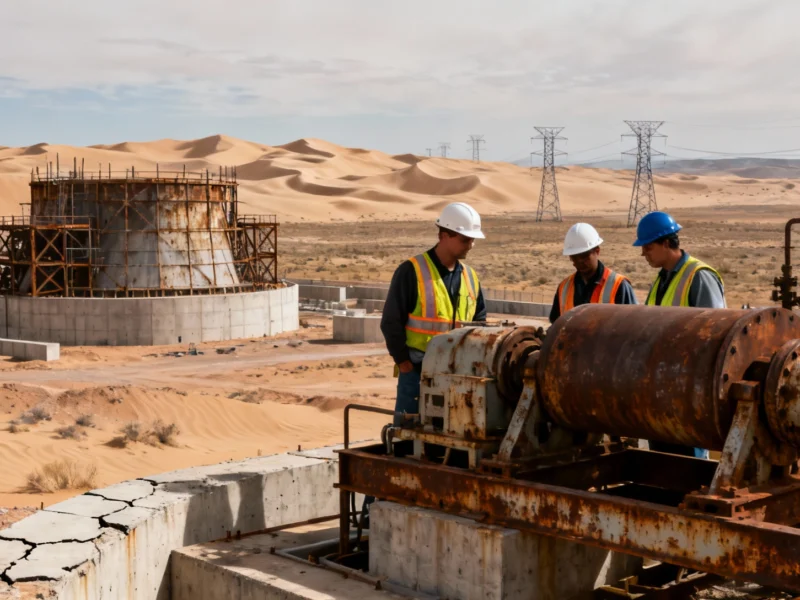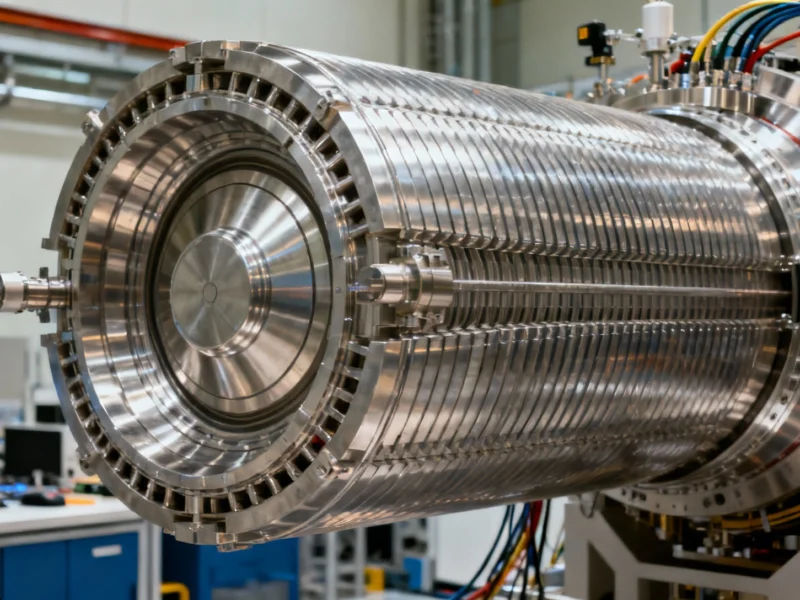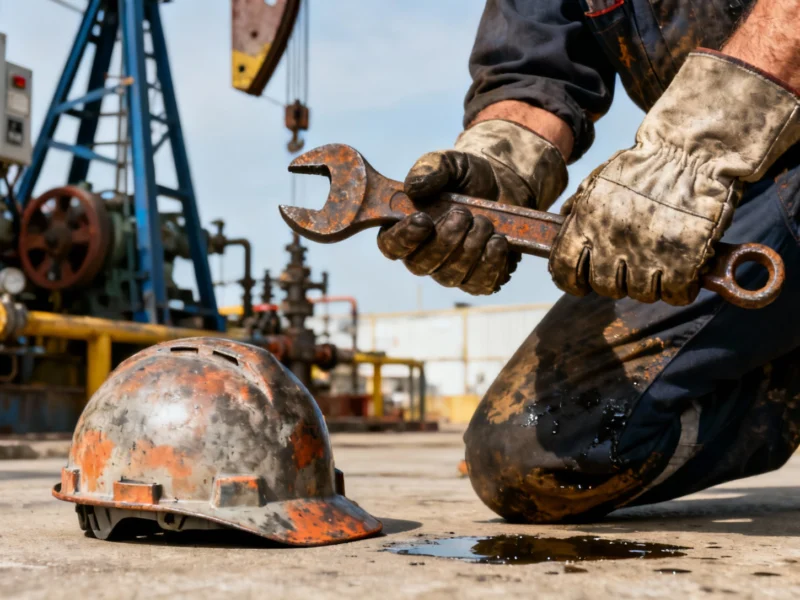Nuclear Ambitions Meet Stubborn Realities
Holtec International’s abrupt retreat from plans to store nuclear waste in New Mexico’s Permian Basin reveals a fundamental vulnerability in America’s nuclear resurgence strategy. The company’s decision to shutter its proposed temporary storage facility—which would have housed 50 canisters of spent nuclear fuel, with eventual scaling to 10,000 canisters—comes despite a Supreme Court victory against state challenges just months earlier. This development underscores what analysts are calling a growing nuclear waste crisis that threatens to undermine bipartisan support for atomic energy.
The reversal represents a significant setback for an industry enjoying unprecedented political support. Both President Trump’s executive orders accelerating nuclear development and President Biden’s substantial funding allocations for carbon-free energy have positioned nuclear power as central to America’s energy future. Yet the unresolved challenge of radioactive waste disposal—affecting both traditional reactors and emerging small modular reactors (SMRs)—continues to haunt the sector’s prospects.
New Mexico’s Nuclear History Informs Present Resistance
Governor Michelle Lujan Grisham’s signing of legislation banning state agencies from issuing nuclear storage permits didn’t occur in a vacuum. New Mexico carries deep scars from nuclear history, dating back to the first atomic bomb test south of Albuquerque and continuing through health consequences for uranium miners in the state’s western regions. This historical context, combined with very contemporary concerns, created an insurmountable political barrier for Holtec’s plans.
The Permian Basin location presented multiple liabilities beyond historical sensitivities. The area experiences increasing earthquake activity—including several magnitude 5 events—linked to wastewater injection from oil operations. Planning nuclear waste storage amidst hundreds of active oil wells and induced seismicity represented a fundamental planning failure that even comprehensive risk management protocols would struggle to mitigate.
The Temporary Storage Fiction
Holtec’s characterization of the facility as “temporary”—proposed to operate for 40 years while awaiting a permanent national repository—strained credibility. The Yucca Mountain project in Nevada, originally designated as the permanent solution, remains tabled since the Obama administration, with no state willing to accept the long-term risks of radioactive storage.
New Mexico already hosts the Waste Isolation Pilot Plant (WIPP), a existing repository for high-grade nuclear waste in the same southeastern region. The 2014 accident at WIPP, involving a single bursting storage drum that required three years and up to $2 billion to clean up, provided tangible evidence of the risks involved. This real-world incident demonstrated how complex technological systems can produce catastrophic failures despite extensive safeguards.
SMR Promise Meets Waste Reality
The retreat comes as next-generation nuclear technology faces increasing scrutiny. Small modular reactors have been highlighted by Energy Secretary Jennifer Granholm as crucial for powering the data center and AI boom. However, research from Stanford and University of British Columbia reveals that most SMR designs will actually increase nuclear waste volumes by factors of 2 to 30 compared to traditional reactors.
Lead researcher Lindsay Krall noted the stark contrast between these findings and industry claims: “Our results show that most small modular reactor designs will actually increase the volume of nuclear waste in need of management and disposal. These findings stand in sharp contrast to the cost and waste reduction benefits that advocates have claimed for advanced nuclear technologies.” This revelation suggests the industry may require significant technological transformations to deliver on its promises.
Oklo’s Meteoric Rise Amid Regulatory Questions
While Holtec retreats, Oklo represents the soaring ambitions of the nuclear renaissance. The Santa Clara-based startup, founded in 2013 by Jacob DeWitte, has seen its stock skyrocket since President Trump’s executive orders fast-tracking SMR development. The company’s selection for three Department of Energy Reactor Pilot Program projects in August signals strong government backing.
Oklo’s Aurora SMR design employs liquid sodium coolant rather than water, offering higher boiling points that reduce high-pressure risks associated with disasters like Chernobyl. The 75-megawatt capacity and backing from Bill Gates have generated substantial enthusiasm. However, the company’s original proposal was rejected by the Nuclear Regulatory Commission four years ago, and its current $20 billion valuation exceeds established nuclear companies like BWXT despite having no certified design, no revenue, and questionable cost estimates.
Professional analysis of Oklo’s public cost projections described them as “somewhere between overly optimistic and absurd,” with the company’s $86 million construction estimate contrasting sharply with independent assessments of $300-500 million. These discrepancies highlight how financial transparency challenges extend across multiple technology sectors.
Comparative Energy Economics Favor Alternatives
Beyond waste concerns, nuclear power faces significant economic headwinds. The Levelized Cost of Energy (LCOE) for new nuclear reactors—whether traditional or SMR designs—substantially exceeds renewable alternatives. Comprehensive analysis by Australia’s CSIRO concludes that wind and solar with storage and transmission represent the lowest-cost new-build power technologies through 2030.
This economic reality creates puzzling policy contradictions. While the Department of Energy heavily promotes SMR technology that remains at the commercial starting gate, mature wind and solar technologies continue advancing rapidly. Meanwhile, President Trump’s cancellation of clean energy projects appears at odds with urgent power needs, particularly as China restricts exports of grid-scale batteries capable of 8-hour storage—potentially handicapping American clean-tech and AI development.
The situation illustrates how technological innovation across sectors creates complex interdependencies in national energy strategy.
Broader Implications for Nuclear Future
Holtec’s retreat signals broader challenges for nuclear waste management that extend beyond single projects or locations. The company’s statement that it will “work with other states who are amenable to used fuel storage based on recent Department of Energy work on public education and outreach” suggests recognition that technical solutions alone cannot overcome public resistance.
The nuclear industry faces a fundamental paradox: while offering reliable, carbon-free power at various scales, it must overcome decades of public concern about safety, resolve waste disposal challenges that have persisted since the industry’s inception, and compete economically with rapidly advancing renewable alternatives. Until these issues find comprehensive resolution, the nuclear resurgence championed by both political parties may remain constrained by its own unresolved legacy challenges.



